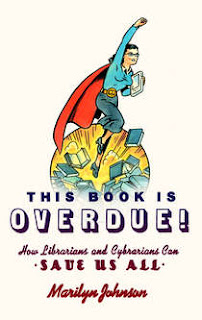Imagine, however, a soccer team that drills all day long but never actually competes. Such a team would be like the North Korean soccer team who allowed 12 goals in a mere three games in the World Cup. (To put things in perspective, the winning team, Spain, scored a total of 8 points for all 7 games of the World Cup. Ouch.) At the other extreme, imagine a team that plays against other teams all the time but never actually practices as a team. That sounds a lot like England at the World Cup.
But what does all this have to do with Direct Instruction? Math is all about problem solving, and by "problem solving," I mean solving problems that require critical thinking. Of course, to solve problems, you need practice, practice, practice, and mastery of underlying content. A student who always drills (practices on straightforward problems) but never actually uses her critical thinking skills is like the team that always practices but never competes. At the other extreme, a student that always tries "challenging" problems but never actually drills is like the team that always competes but never practices. Neither is a successful learning strategy. A good teacher needs to find the right balance between the two for his classroom.
It is apparent, however, that blindly applying either Direct Instruction or its archnemesis—a discovery-orientated approach—can lead to both extremes. So, let's examine what works with Direct Instruction.
My favorite Direct Instruction strategy is the careful examination of pre-skills. For a gi
Blog: Amsco Extra! (Login to Add to MyJacketFlap)
JacketFlap tags: Internet Resources, Accessiblity, Reading, Technology, Dogs, Blogs, Careers, Humor, Research, Add a tag
 During last week, which was National Library Week, I got to thinking about a book I had read recently about libraries and librarians. It was Marilyn Johnson’s This Book Is Overdue! How Librarians and Cybrarians Can Save Us All.
During last week, which was National Library Week, I got to thinking about a book I had read recently about libraries and librarians. It was Marilyn Johnson’s This Book Is Overdue! How Librarians and Cybrarians Can Save Us All.Witty and Provocative. Who would have thought that a book about libraries could be both thought-provoking and funny? I must admit that I had expected the book to be humorous since I have met the author (www.marilynjohnson.net) several times, and she is hilarious in person. I have also read her only other published book, The Dead Beat: Lost Souls, Lucky Stiffs, and the Perverse Pleasures of Obituaries, a witty take on writing obituaries.
Are Librarians Obsolete? Ms. Johnson has often been asked if librarians are obsolete in the Age of Google. Her answer is “Are you kidding? Librarians are more important than ever.” She points out that there are many people who do not have computers, do not know how to do research on the Internet, and do not know how to compose and send e-mails. When they show up at the library, they have to be taught how to do those things. Most librarians are busy keeping up with changing technologies so they can at least be a step ahead of their patrons. Some librarians are way ahead of others, thus the author’s use of the term cybrarians in the subtitle to her book.
Websites. The author shows how many of the Web sites that we use or should use when we go on the Internet are library related. WorldCat.org (www.worldcat.org) connects to more than 10,000 libraries worldwide. It tells you which libraries have which books. The New York Public Library (www.nypl.org) Web site is humongous. The British Li
Blog: Amsco Extra! (Login to Add to MyJacketFlap)
JacketFlap tags: Accessiblity, Technology, Foreign Languages, Internet Resources, Add a tag
 It used to be that school children would bring an apple to their teachers. Now it seems that Apple, in the form of the iPod and iPhone, is delivering an informal education to anybody who cares to receive one.
It used to be that school children would bring an apple to their teachers. Now it seems that Apple, in the form of the iPod and iPhone, is delivering an informal education to anybody who cares to receive one.Blog: Amsco Extra! (Login to Add to MyJacketFlap)
JacketFlap tags: Math, Geometry, Accessiblity, Add a tag
 The other day, I received a call that sent my brain scurrying about in curious ways. You see, a lady needed information from Amsco in order to print Braille editions of Geometry and Preparing for the Regents Examination: Geometry. I gave her the information and went on with my day. I mean, it’s neat that our books are accessible to even more students. That should have been the end of it. . .
The other day, I received a call that sent my brain scurrying about in curious ways. You see, a lady needed information from Amsco in order to print Braille editions of Geometry and Preparing for the Regents Examination: Geometry. I gave her the information and went on with my day. I mean, it’s neat that our books are accessible to even more students. That should have been the end of it. . .
But then my brain kicked me in head with this question: How do you do constructions if you can’t see them? This was followed by: If you couldn’t see, would it be easier to draw a triangle according to a set of side and angle measures or to construct a triangle congruent to a given triangle?
I had to find out. During lunch, I looked up what measuring tools exist for the visually impaired. (For my purposes, I disregarded technology.) There are rulers with raised numbers and tick marks, and rulers with a sliding piece to keep track of your measurement. There are also Braille protractors with raised angle indicators at 10-degree intervals and a special pointer wand that you can use to lock in your angle while drawing the ray.
My own protractor and ruler happen to be tactile, so I closed my eyes and tried to measure out lengths and angles by feel to form a triangle. It was possible, but boy was it tedious! I’ll admit that having the right tools and the proper training probably make it easier. Still, once was enough for me.
Next, I drew a triangle on a piece of paper and flipped it over so I could feel it with my fingertips. Then I got out my compass and straightedge and tried to construct a sightless copy by the book (Geometry, pages 196 and 197, actually). After I got used to drawing my arcs heavy enough to feel, this was sooooo much easier. Neither compass nor straightedge have finicky numbers.
You know, I admire the visually impaired students who are going to be tackling geometry and wish them well. And if you happen to be a math student or teacher who has used any of the tools mentioned, I would be happy to hear about your experiences.
If any of you blog readers wish to learn more about the many Amsco books available in large print, Braille, or sound recordings, check out the American Printing House for the Blind at htmhttp://www.aph.org/index.htm.
--Jessica




